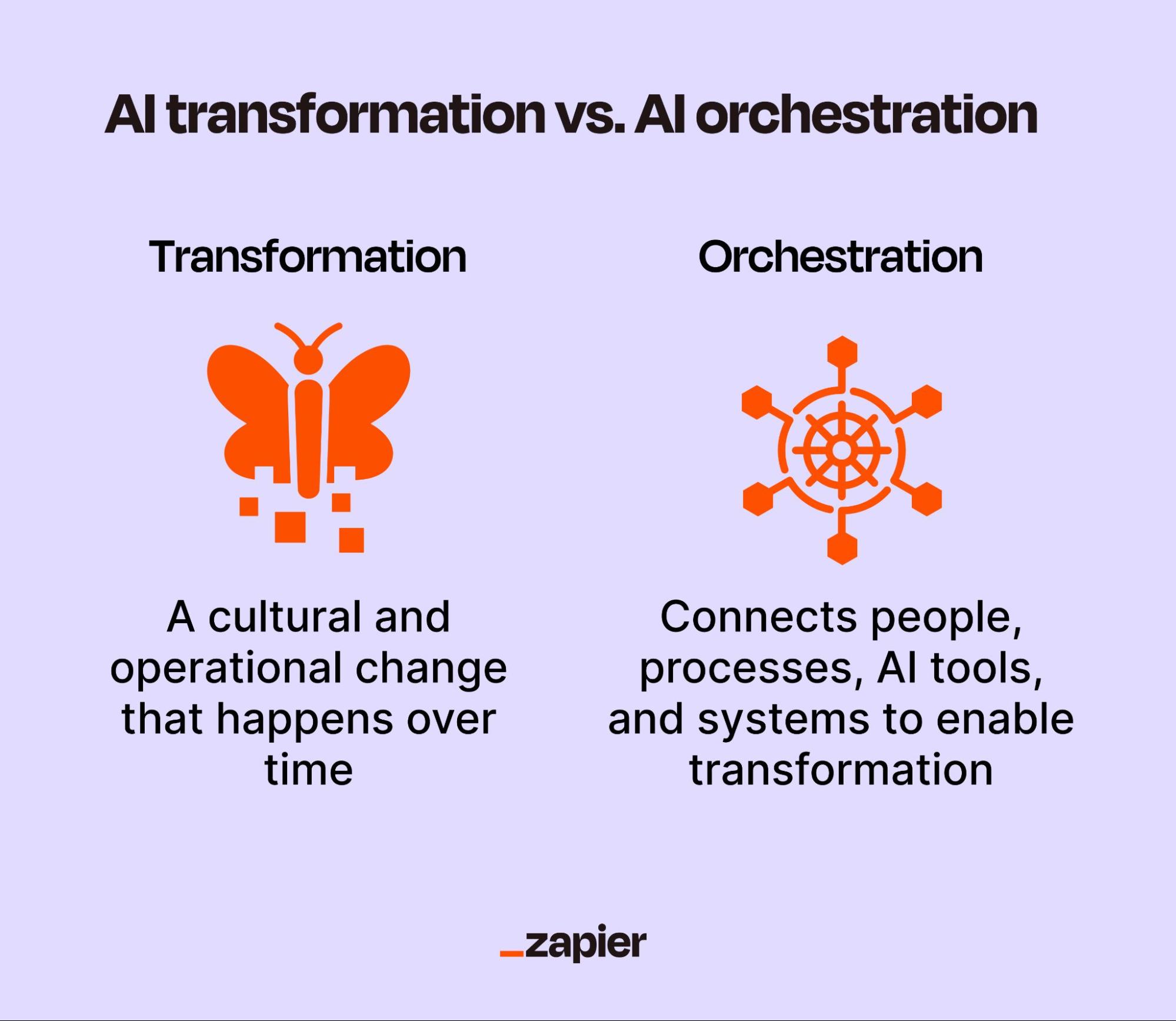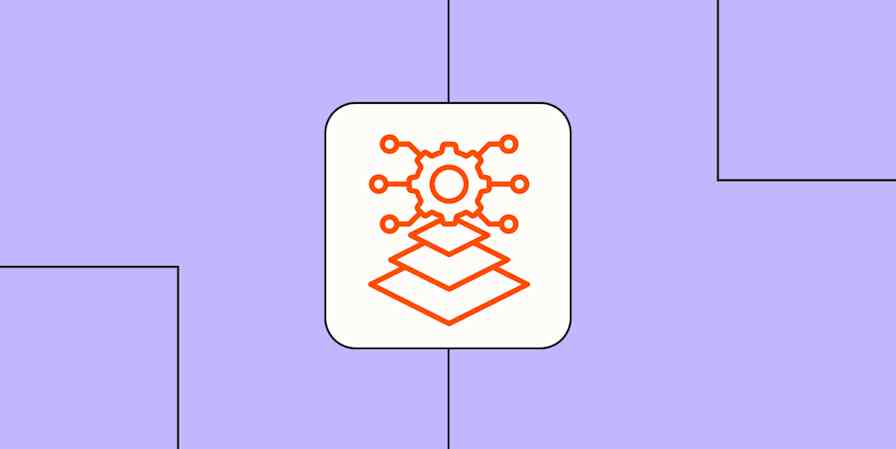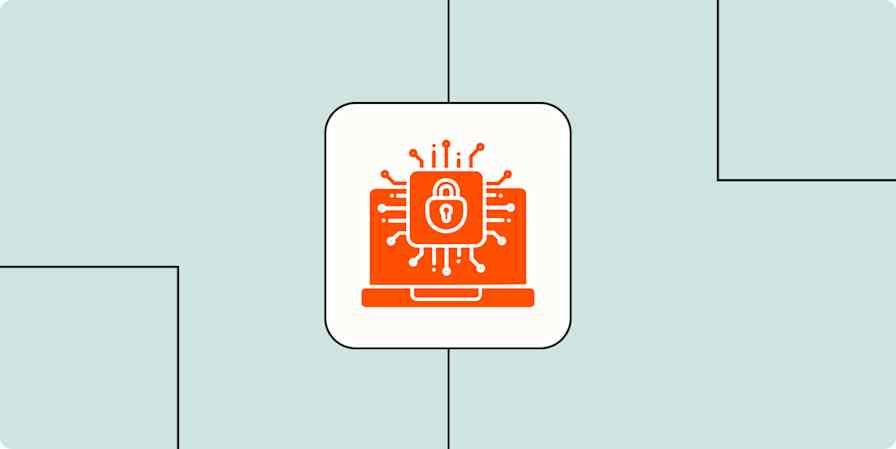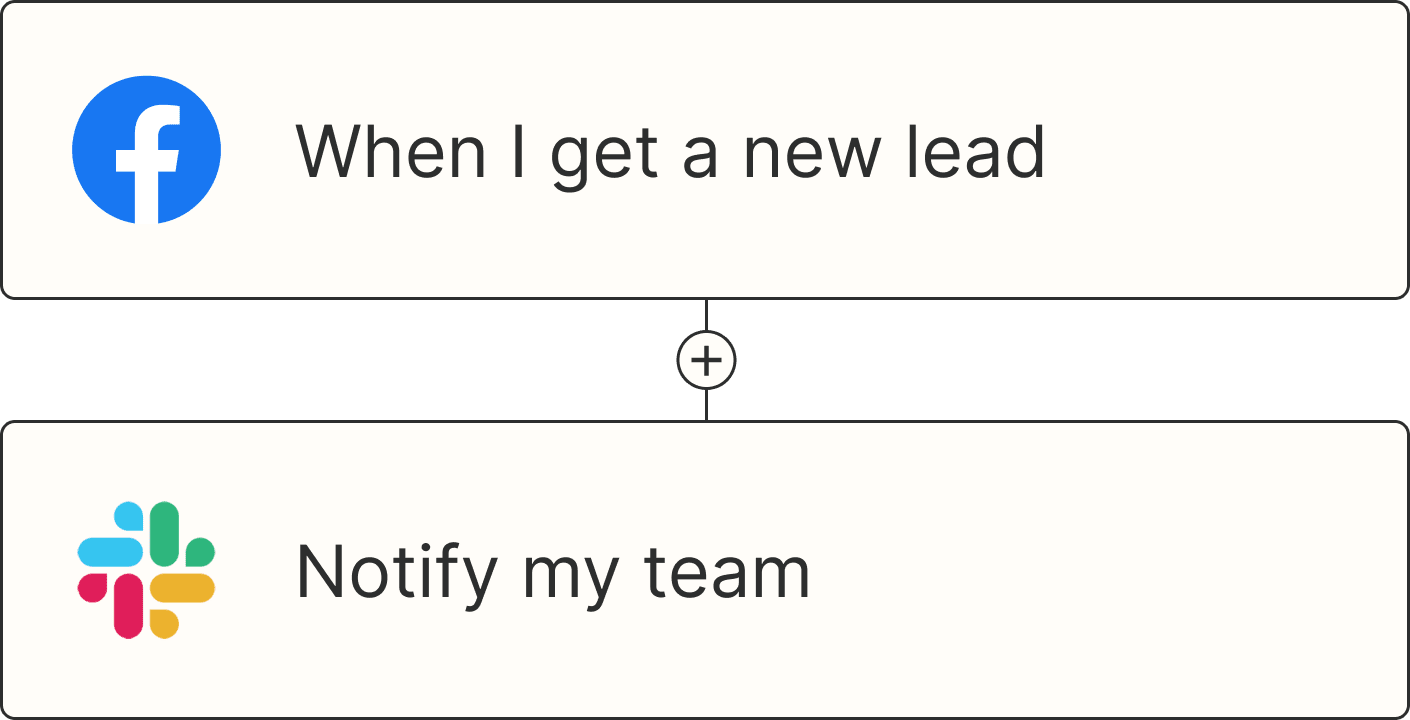It can feel impossible to escape the pressure to "do something" with AI. Maybe your CEO just asked about your AI strategy in an all-hands, or your competitors are shipping faster thanks to automation. Or maybe you're just tired of watching your team lose hours every week to tasks a bot could easily handle.
You know AI is a big deal—but figuring out where to start is where most teams get stuck. You don't need another one-off pilot project that fizzles out after a few weeks, or a massive consulting engagement you can't maintain. What you do need is a practical, flexible approach to making AI part of how your business actually works—day to day, team to team.
In this guide, I'll walk you through what AI transformation really means and how Zapier adopted AI org-wide. Then, I'll show you how teams like yours are making it happen: starting small, moving fast, and building smarter workflows with Zapier across RevOps, support, IT, HR, and beyond.
Table of contents:
What is AI transformation?
If "digital transformation" was the rage in the 2010s, "AI transformation" is its 2020s cousin who just showed up with a faster laptop and a bunch of opinions about prompt engineering. Buzzwords aside, AI transformation is a very real—and practical—shift that businesses are making to embed AI into how work gets done.
Put simply, AI transformation is the process of integrating artificial intelligence into the core of your operations. It's not a matter of just embedding a FAQ chatbot into your website or testing a tool for fun (though, yes, we've all asked ChatGPT to write haikus about our job). I'm talking about using AI to reimagine workflows, automate tasks, make better decisions, and unlock new opportunities you didn't even know existed.
Much like my embarrassingly slow progression up to 15-pound dumbbells in the gym, this transformation doesn't happen overnight. You don't get to press a button and magically convert into an AI-first company—instead, it's the process of building muscle over time, layering AI thoughtfully into everyday processes.
At Zapier, we think of AI transformation as more than just adopting new tools. It's a full organizational shift in how work gets done. Unlike AI adoption, which often stops at surface-level improvements, AI transformation fundamentally reimagines how teams operate—leading to measurable business outcomes like greater efficiency, faster innovation, and even entirely new business models. In other words, AI adoption is doing the same work better or faster, while AI transformation means providing new value that wasn't previously possible.
To help other companies navigate this shift, we co-created an open-source AI transformation framework built from customer insights, market research, and our own journey (which took us from 0% to 97% AI adoption in under a year). At the heart of this framework are four key pillars:
Leadership sets the vision and urgency. Leaders declare AI a strategic priority, create roadmaps that connect AI to business goals, and dedicate resources with executive backing to make real progress.
Culture drives fluency and experimentation. AI transformation isn't just for engineers—it's for everyone. At Zapier, we hosted hackathons, celebrated quick wins, and empowered employees across teams to build their own AI solutions. That grassroots momentum turned into org-wide capability.
Tools provide the foundation to scale. This means giving teams access to a reliable enterprise AI model and an orchestration layer (like Zapier) to integrate AI into real workflows. Strong infrastructure and accessible data unlock creativity and speed.
Governance creates safe, scalable pathways that actually unlock innovation rather than slowing it. Clear guidelines and smart checkpoints let teams build with confidence without waiting on IT every step of the way.
When these pillars work together, they drive real business impact. And the good news is that you don't have to start from a blank slate; our team at Zapier has designed the blueprint for you based on our tried-and-tested AI transformation journey. And with Zapier's AI orchestration platform, you can build sophisticated automated systems without needing to hire a fleet of machine learning engineers or throw your current tech stack out of the window.
AI transformation vs. AI orchestration: What's the difference?

Think of AI transformation as the big, exciting road trip everyone is on right now, from startups to Fortune 500 companies. It's not about getting to one final destination (sorry, no "AI-ready" badge waiting at the end); it's about the journey—evolving how your business works, how your teams think, and how technology helps you grow.
AI transformation is the broad, market-wide shift toward more intelligent, automated, efficient ways of working. It's a cultural and operational change that happens over time—and in all honesty, often in fits and starts. That's because transformation sounds great until you actually try it.
That's where AI orchestration comes in. Zapier is the orchestration layer, the connective tissue that brings your tools, teams, and AI models together so they actually work. If AI transformation is the road trip, orchestration is like the car's system computer that keeps the engine, fuel injection, and transmission all working smoothly without everything randomly catching fire on the side of a busy highway.
In short: Transformation is the destination, and orchestration is (part of) how you get there.
Why is AI transformation important?
Aside from my go-to Spotify work playlist (a mix of the Game of Thrones and Lord of the Rings soundtracks, thanks for asking), the way I work today looks nothing like how I worked five years ago. And five months from now, I can guarantee you it'll look different again.
The landscape of work is changing, and AI transformation isn't a trend you can afford to ignore. It's how businesses stay relevant, resilient, and ready for whatever's next.
Here's why it matters.
Better customer experience
Whether they're reaching out for support, browsing your site, or waiting on a proposal, people want seamless, hyper-personalized experiences. AI transformation helps you meet those expectations without making your team sprint a marathon every day. Think: instant responses, tailored messaging, and proactive service—all made scalable with smart automation.
More time for strategic work
If your team spends more time updating spreadsheets and chasing approvals than actually doing impactful work, that's a problem. AI transformation means automating the repetitive stuff so your people can focus on higher-value tasks (like strategy, creativity, or finally tackling those "someday" projects to take your business to the next level).
A connected tech stack
Disconnected systems means siloed data, duplicated efforts, and dropped balls. AI transformation connects the dots between tools and teams so your business runs more like an orchestra instead of a high school garage band.
Agility for your team
AI transformation can help fix what's broken right now, sure—but it also lays the groundwork for long-term growth.
Markets shift. Priorities pivot. AI tools evolve weekly, if not daily. When your systems are flexible and automated, you can adapt to market and technological changes quickly without having to start from scratch each time.
The AI transformation process at Zapier
AI transformation starts with a spark—curiosity, urgency, maybe even a little chaos—and turns into something structured, strategic, and wildly impactful over time.
At Zapier, our AI transformation journey didn't kick off with a 60-slide strategy deck or a perfectly designed roadmap. It started with a few curious people tinkering with large language models before ChatGPT became a household name.
Then, when GPT-4 dropped, it was clear that this wasn't just another tool. It was a tectonic shift. With our CEO leading the way, we called a "Code Red" around AI. We didn't wait for a polished plan. We paused what we were doing, ran a company-wide AI hackathon, and told every team (tech and non-tech) to get building. And that urgency worked.
Here's how you can bring that same energy to your organization with fewer fire alarms and more forward momentum.
1. Start with curiosity, not consensus
At Zapier, casual experimentation turned into a full-company push once leadership signaled it was safe—and important—to play.
You don't need to have all the answers; you just need a starting point. Take stock of where your teams are already exploring AI (even informally). Who's prompting ChatGPT for content drafts? Who's fiddling with spreadsheet formulas using AI helpers? A quick audit of how work actually happens today will help you identify friction points, early adopters, and opportunities.
Look for:
Manual processes ripe for automation
Tools that don't talk to each other
Teams already experimenting on their own
2. Set business-aligned goals (not just shiny experiments)
Cool demos are fun, but transformation only sticks when it supports real business outcomes. Our team at Zapier made AI adoption a company-wide priority—baked into planning cycles, tracked in engagement surveys, and championed by leadership.
Think about where AI can help you move the needle. Maybe it's reducing response times in support, streamlining hiring pipelines, or speeding up decision-making in operations. Whatever it is, tie your goals to specific outcomes—and share them widely.
3. Build infrastructure and energy
You need both the scaffolding and the spark. At Zapier, we paired our hackathons with enablement hubs, procurement fast tracks, usage guidelines, and internal AI "coaches" who helped others get started.
We also baked AI fluency requirements into hiring and created an enablement experience so all new hires could access and use AI and Zapier tools. That way, we ensured every new member of our team had the resources and mindset needed to contribute to our culture of AI transformation. AI usage is now expected for all employees, from engineering to HR, so everyone stays in that builder mindset.
At your org, that could look like:
Clear usage policies and review checkpoints
An internal AI hub for sharing tools, use cases, and wins
A few passionate people who can lead the charge and unblock others
Don't over-engineer it. Give people what they need to get started, and let experimentation do the rest.
4. Pick tools that help you move fast and with precision
Tech should accelerate your transformation, not slow it down with complexity or silos. At Zapier, we use our own automation platform to build and scale AI-powered workflows across every team.
With Zapier, you can:
Coordinate AI workflows across tools and teams using Zapier Interfaces, Tables, and Canvas.
Trigger actions from AI insights using ChatGPT, Claude, open source models, or AI by Zapier.
Deploy custom chatbots to help customers or teammates get fast, on-brand answers.
Orchestrate complex workflows with built-in tools for filtering, branching logic, and human-in-the-loop review.
5. Bake in safety and scale
AI is powerful, but it's not magic (if you're looking for magic at work, I once again suggest hitting play on the Lord of the Rings score). Our team at Zapier accounted for this by building safeguards that let us scale confidently. Teams set up human review steps, documented what data was being used, and openly shared what we learned.
In your AI transformation journey, make sure to ask things like:
Where do we need human eyes on AI decisions?
What data is powering this?
What's the fallback plan if the AI gets it wrong?
Zapier makes it easy to add stop points in your workflows so your team stays in control, even as you automate more.
6. Keep the momentum going
Transformation is a new way of working, not a one-and-done project. Zapier tracked org-wide adoption (we're now at 97%!), built AI into our hiring process, held hackweeks, and made sharing wins part of the culture.
Here are a few ideas to keep up your transformation momentum:
Celebrate early wins (even scrappy ones)
Share experiments across teams
Keep leadership involved and visible
Measure what matters (e.g., active users, time saved, customer impact)
Eventually, what starts as a one-off hackathon becomes how you work. At Zapier, AI isn't a side project anymore—it's just part of the job.
How to measure AI transformation success
If you want your momentum to stick—and your stakeholders to stay bought in—you need to measure what's working. But success in AI transformation is more of a quality-over-quantity thing. It doesn't matter how much AI you're using; the important thing is whether that usage is actually helping your business operate smarter, faster, and better.
Here's how you can build your own measurement plan that aligns with your goals (not someone else's hype cycle).
Measure adoption across your org
Start by tracking who's using AI and where. Adoption is your first signal of momentum—and it helps you identify champions, blockers, and areas that need more support.
At Zapier, we started by simply asking "Are you using AI in your day-to-day work?" in our twice-yearly engagement survey. That's how we now know that 97% of our team is actively using AI—not because they were told to, but because it's genuinely helping them do their jobs more efficiently.
Try measuring:
Percent of employees using AI tools weekly
Usage trends for internal AI hubs or documentation
Most popular AI tools or use cases
Measure impact on productivity
Next, zoom in on how AI is helping your teams move faster or work smarter. Look for time savings, increased throughput, or even just reduced frustration.
For example:
Time saved per AI-powered workflow (e.g., lead routing, content drafting)
Increase in support ticket resolution speed
Faster turnaround on proposals, reports, or campaign launches
Fewer manual handoffs between teams
At Zapier, AI-powered workflows have reduced the need for repetitive tasks across teams—freeing up headcount and giving people space to focus on more strategic work.
Measure real business outcomes
At the end of the day, AI transformation should help you hit your business goals—not just rack up pilot projects. Tie AI initiatives to metrics like:
Revenue growth (from faster sales cycles or better personalization)
Customer satisfaction (via CSAT/NPS improvements)
Operational efficiency (e.g., cost per ticket, hours to close)
Funnel performance (from AI-assisted marketing or sales workflows)
Even if AI is only one piece of the puzzle, connecting it to real outcomes makes the value clear and keeps leadership invested.
Track knowledge-sharing and experimentation
In AI transformation, what gets built should also get shared. A culture of experimentation is harder to quantify, but it's often what drives transformation forward.
Look for:
Percent of internal AI demos or show-and-tells
Percent of shared playbooks, templates, or AI wins
Peer-to-peer coaching or enablement metrics
Uptake of internal AI documentation or learning resources
At Zapier, we've found that every hackathon or Slack thread that surfaces a new AI use case builds collective momentum. Those moments matter.
Don't overcomplicate it—just stay consistent
You don't need a 12-tab spreadsheet or a custom machine learning model to measure success. Start small, pick metrics that reflect your values, and revisit them regularly.
The key is to:
Track progress over time
Celebrate wins out loud
Adjust your goals as you grow
AI transformation isn't linear, and it's not uniform across every team. But if you're seeing adoption, impact, and energy, that's a sign you're on the right path.
AI transformation examples by department
Much like rock climbing shoes, AI transformation definitely isn't one-size-fits-all. My husband learned the former the hard way after a day at the climbing gym in my old shoes, but you can just take my word for it when it comes to the latter.
The way you incorporate AI into your workflows depends on your tech stack, your team, and frankly, your creativity. Each department will have its own take on what's noise vs. what's useful—which actually makes AI a flexible teammate, as long as you give it the right job. For example:
Ops teams might analyze, summarize, and create charts from business data with AI.
Sales teams might nurture and qualify leads with AI chatbots before adding them to a CRM.
Marketing teams might speed up content production with AI or automate AI image generation for social media.
Customer success teams might route and triage tickets with AI, conduct sentiment analysis, and embed an AI chatbot on their website to answer simple visitor questions.
Engineering teams might analyze and interpret larger datasets with AIOps, increase response times, and find root causes more quickly.
Human resources teams might parse resumes automatically, get AI-generated candidate summaries, or onboard employees with AI-generated emails.
For an even better idea of how teams are using AI to transform the way they work, here are a few real-world examples of how AI has improved these businesses' bottom lines.
RevOps

Popl—a company growing fast and fielding hundreds of inbound leads daily—found themselves in a classic sales dilemma: too many leads, not enough humans to chase them. Their team was swimming in demo requests via HubSpot and Salesforce, and manually sorting, routing, and following up just wasn't cutting it.
So instead of scaling their problems, they scaled their process with Zapier and AI. First, they used Zapier to build an automated pipeline that handles lead intake end-to-end. When someone submits a demo request, A Zap pulls in the details, cross-checks the lead against a list in Google Sheets, notifies the right team in Slack, and assigns the lead to a rep based on rules like company size and territory.
Then, using OpenAI via Zapier, Popl's team added a workflow that automatically categorizes inbound emails (real lead, cold outreach, spammy pitch, etc.) and enriches lead data by extracting company info from email domains—so they can qualify leads without manual research.
Now, their sales team spends more time having conversations and less time playing CRM admin or email bouncer. They have a sales engine that actually scales with their business, and they've saved $20,000 by replacing a pricey integration.
Learn more about how to automate your RevOps workflows, or try these Zapier templates to build a unified lead capture system with AI.
Increase lead engagement with a conversational chat experience embedded on your website.
Customer support

ActiveCampaign was staring down a problem: 25% of new customers were churning within 90 days—and most of them hadn't received any onboarding. The team at ActiveCampaign knew that hands-on support early in the journey was key to retention, but when you're welcoming thousands of new users each month, 1:1 onboarding just doesn't scale.
So they turned to Zapier and AI. When a new customer signed up, ActiveCampaign tagged them by language. That tag triggered a Zap that reformatted the customer data, passed it to their webinar platform (Demio), and automatically registered the user for a live onboarding session in their preferred language.
And it didn't stop there. Depending on whether the customer showed up or ghosted the webinar, automated follow-ups kicked in—delivering a personalized experience at scale, without the support team lifting a finger.
Then, they layered in AI to help surface deeper insights and optimize follow-ups based on engagement behavior. They saw a 440% increase in webinar attendance, a 15% drop in 90-day churn, and a 2x boost in product adoption within the first month. All without scaling headcount.
If you're trying to support more customers without burning out your team, automation and AI can do the heavy lifting. Try this Zapier template that uses AI to find sales opportunities hidden in support tickets—then routes them straight to your sales or success team before they slip through the cracks.
Identify whether support tickets contain buying signals so you can easily route new leads to sales.
Human resources

You don't have to wait for someone to hand in their resignation to start intervening. At Zapier, the People team built an AI-powered early-warning system to flag employees who may be at risk of leaving, so your HR team can act before it becomes a full-blown exit.
This template uses a Zapier Table to log Slack sentiment, survey engagement, and employee records. Once that data is flowing, a dedicated Zap runs weekly that uses AI logic to look for patterns (like low sentiment, engagement drops, or team churn) and flag any employees who hit a risk threshold. Then, it sends an alert to the employee's manager or HR so someone can reach out proactively.
Because the system works on a regular cadence, your People team doesn't have to guess whether a dip in morale is a blip or a trend—you'll get a data-backed pulse before someone walks out the door. This kind of transparency can help spot systemic issues early and give your HR staff more bandwidth to do their most important work: meaningfully connecting with other humans.
Learn more about how to automate your HR processes, or get started with this pre-built template.
Predict employee turnover and boost retention with automated risk analysis and alerts.
AI transformation is more accessible than you think
AI transformation isn't reserved for tech giants or companies with deep machine learning benches. It's for teams like yours—ones that are growing, adapting, and trying to do more without adding complexity (or headcount).
You also don't need a five-year roadmap to get started. You just need the right foundation.
Zapier is the AI orchestration layer that connects your people, tools, and processes—so you can actually use AI in ways that move your business forward. It's how sales teams respond faster, support teams scale smarter, IT teams automate at the edge, and operations teams build the systems that power everything else.
Related reading:








